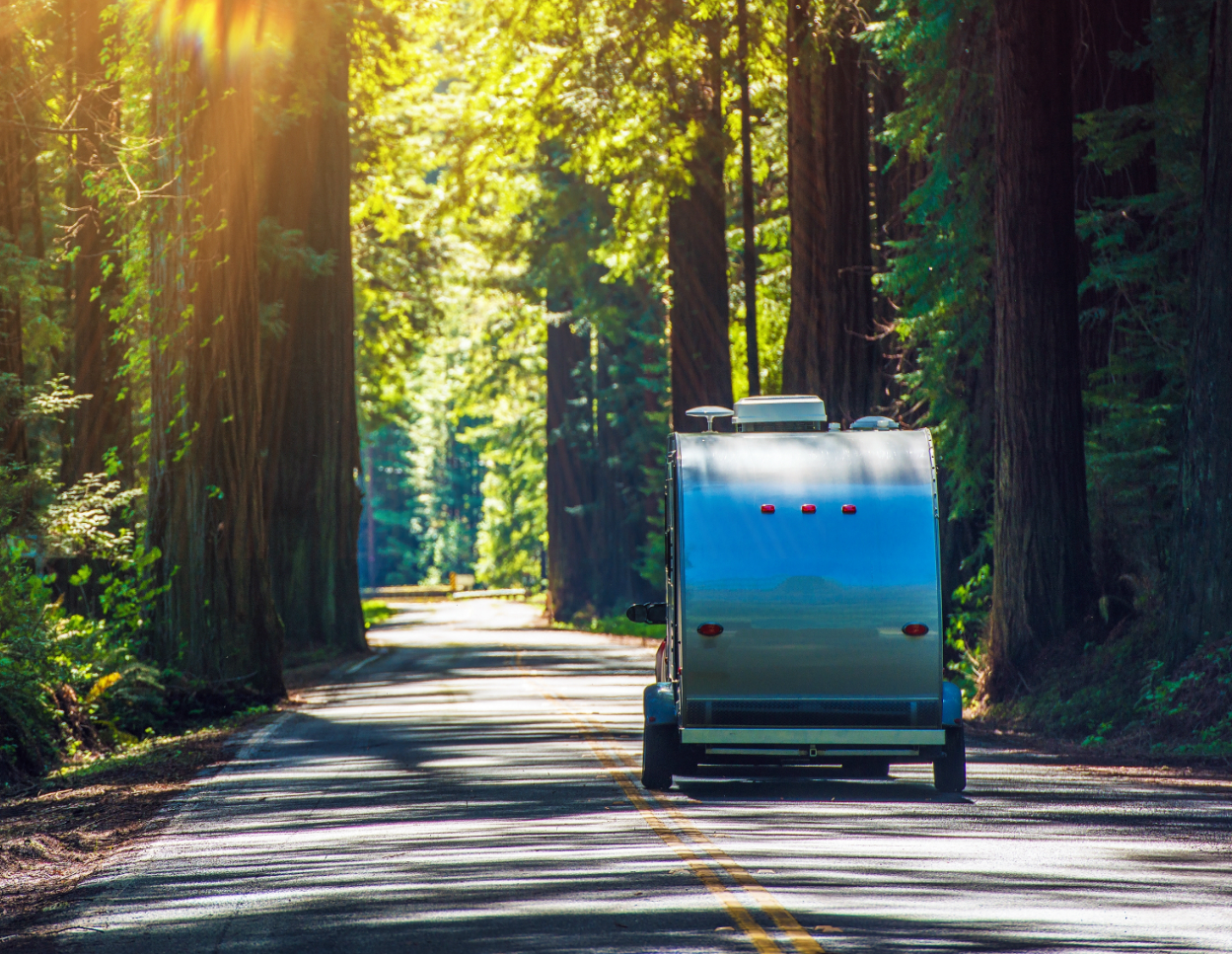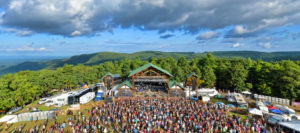
The coronavirus > COVID-9 earlier this year delivered a one-two punch to patrons of the RV camping and live music festival sectors. It also presented in stark contrast the tale of those two industries and how different they are when faced with a potentially existential threat. Almost immediately, both the live entertainment and the camping and recreational vehicle (RV) industries got hammered. Both were shut down cold. No concerts, no camping, no club shows, no festivals.
However, those similarities soon ended and traveled different roads. As the pandemic slogged on and science and consumers came to understand it better, what was murky soon cleared. Those denizens of both RVing and music festivals realized the sectors had nothing in common and the longer-term impact upon these two unique categories couldn’t be more different.
Live music still struggles – horribly. RVing is stronger than ever. How governments, consumers, and the respective industries responded reflect how little we knew then, and how much we think we know now.
In the immediate aftermath, as America – and nations around the globe – tried to wrap their collective minds around a response, shit shut down. Live events, from clubs to concerts to music festivals: Closed. Camping and roadtripping: Closed. Seemed reasonable at the time. It had been since 1919 since leaders of government and science faced a pandemic, and the Spanish flu that infected a third of the world’s population and killed 50 million people. So the government’s (eventual) shuttering of anything that involved “social gathering,” from hair salons and offices to campgrounds and national parks to small clubs and stadium shows, seemed rational.
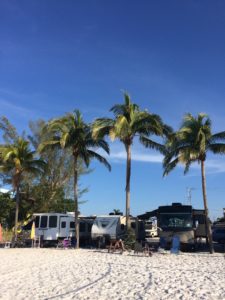
The RV and live music biz both are vital to the US economy. The US RV industry that accounts for some $114 billion economic impact, providing almost 600,000 jobs and $32.2 billion in wages, says the RV Industry Association. The total outdoor recreation economy employed 5.2 million and topped $778 billion in 2018 (from the Commerce Department’s first-ever report about the industry).
Numbers vary widely, but they’re in the billions with a “B” (even higher to others). The global live event scene was $26 billion before Covid, says Rolling Stone. #WeMakeEvents, a coalition of trade bodies, businesses, unions, and live events workers that lit North American venues, homes, and cities in red on September 1 to raise public and media awareness in support of the live events sector, tallies live events at a payroll of 12 million people and contributing $1 trillion to the US economy annually. (Learn more at https://bit.ly/2YJMFBi).
Rational Minds Looking For Solutions
In the weeks and months that followed, the pandemic panic led rational business minds to devise escape routes. Those who had survived that long (maybe thanks to the Payroll Protection Plan), posted rules, taped socially distanced spaces on the ground, erected acrylic spit shields, and prayed for the best.
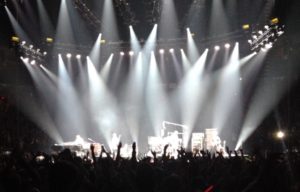
In June, a survey found that 90 percent of independent venue owners, promoters and bookers said they couldn’t survive a few months without targeted government funding. Now, a few months later, some of those who survived ‘til summer won’t make it into fall. down here in SoFla, our venerable small venue The Funky Biscuit reopened in April with a night of socially distanced music. It sold out.
Yet, fear prevailed, and the numbers were unsustainable. The Biscuit in August announced its closing. Chalk that up as one of countless thousands of small clubs that just couldn’t make it work. Long Live the Biscuit!
Six months in, we’ve regained some semblence of our sea legs and sensibilities. A single word defines how the industry tried to respond. “Pivot.”
Campgrounds – host to what many believed early on to be the quintessential “social distancing” activity known to man, other than “Netflix and Chill” – were allowed to reopen. Some only allowed RVs, with their own toilets and showers; sorry, bathhouses remain closed at many, so no tenters.
RV industry’s business has been nothing short of meteoric since the pandemic’s arrival. Coronavirus was the vaccine the industry desperately needed to stay alive. In July 2019, new RV shipments had dropped by 23.2% compared to the previous year, according to the RV Industry Association. As recently as February, any RVer who could spot business trends as they drove by RV retailers with tens of millions of dollars in glistening rigs on their lots knew hell was coming.
Now, factories are in full force. RV makers delivered more than 43,000 RVs in July – the most in four decades. Try to find a quality used RV for sale out there. They’ve disappeared from the classifieds.
Who’s buying? It’s estimated that 11 million U.S. households now own an RV, extending a decade-long ownership-trend driven by millennial families with an active outdoor lifestyle and Baby Boomers nearing or entering retirement. Post-Covid, some 46 million Americans plan to take an RV trip in the next 12 months.
Even RV rentals are at historic levels. Interest is up 650% since 2013 and 73% of millennials say they’ll rent an RV in the future, notes RVShare.
Then there’s live music
Event cancellations brought the curtain down. Some 95% of live events were cancelled, 96% of companies cut staff and/or wages, and 77% of people in the live events industry have lost 100% of their income, including 97% of Form-1099 workers.
Convergence of Live Events and Vehicular Fun
With almost a combined $2 trillion in economic impact, RVs and events have a vested interest in success. People are hitting the road. AAA estimates that 97% of summer travel will happen by car. That’s roughly 683 million trips, reported Investors Business Daily. They’re seeking “protective bubbles in the age of coronavirus,” it wrote.
“Traditional” concerts haven’t returned. But leave it to an industry as creative – and dependent upon mass gatherings for its very survival – as the entertainment business to come up with alternatives. These “protective bubbles in the age of coronavirus” are dosed with steroids when you consider RVs.
No place epitomizes the RV-and-music festival reality than the Spirit of the Suwannee Music Park in rural Live Oak, Florida. Like other host venues, #SOSMP was shuttered by government orders. Now, they’re developing creative and comparatively safe ways to stay in business, writes Live for Live Music. With at least four festivals shut down – thru and including its Suwannee Hulaween held each October – the 700-acre campground has scaled up cleaning and preparing for the future.
Drive-in concerts and concerts with “platforms” and cordoned-off spaces for groups of friends or family members, and other defined distancing regs. Knowing its future was challenged, Live Nation Entertainment hosted a drive-in concert series in July in Indianapolis, Nashville and St. Louis with acts including Brad Paisley, Darius Rucker, and Nelly. Vehicle had a private, socially-distanced parking spot for tailgating.
In suburban and rural drive-in theaters, concerts are being streamed for socially-distanced carloads of fans. A Garth Brooks concert was shown at 300 drive-ins around the country in August. Cost: About $200 a car, so pack in your COVID-cleared concert-lovin’ friends and family.
A years-long push toward live streams and “couch tours” seemed to prep pandemic-fatigued fans to pay for and stream concerts by their favorite acts.
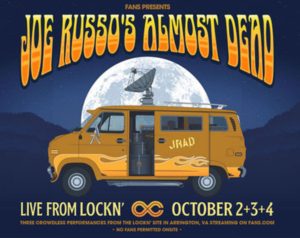 As music festivals around the country (and world) stay shuttered, the Lockn’ Festival will try to serve loyal fans longing for a trip to the farm in rural Arrington, Virginia. Its hybrid solution: This October, they’ll stream three nights of shows by Grateful Dead band JRAD.
As music festivals around the country (and world) stay shuttered, the Lockn’ Festival will try to serve loyal fans longing for a trip to the farm in rural Arrington, Virginia. Its hybrid solution: This October, they’ll stream three nights of shows by Grateful Dead band JRAD.
“That will be how we enjoy ourselves until we’re ready to return to the farm,” said producer Peter Shapiro.
“Someday, hopefully sooner than later, live music events WILL return, and we here at The Spirit Of Suwannee Music Park will be as joyous as anyone,” wrote park owner James Cornett. “My truest wish is that, in surviving this pandemic’s test of our society, we will see more examples of love and community like the one I have seen from our staff these last few months. We truly ARE all in this together.”
